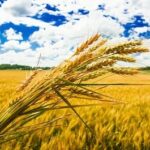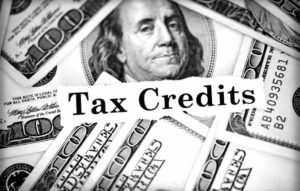Farmers Benefit from Expanded Paycheck Protection Program Loans
Coronavirus Food Assistance Program and Employee Retention Tax Credit Expanded
A new source of COVID-19 economic relief was opened to farmers with the renewal of the Paycheck Protection Program – popularly known as PPP2 – in late December 2020. Unlike the first round of PPP loans, farmers who showed a Schedule F loss in gross revenues for 2020, compared to 2019 revenues, qualify for loans under this program.
There is also a significant change that will open first round PPP loans as well as extend PPP2 loans to many in the farming industry who did not previously qualify. If they qualify based on gross receipts, farmers who file Schedule F may receive up to $20,833 under PPP first draw as well as PPP2. “First draw” refers to the original PPP program created in spring 2020.
To qualify for PPP2, a farmer must show at least a 25% loss in gross receipts for any quarter in 2020 compared with the same quarter in 2019.
The Paycheck Protection Program was created by the Coronavirus Aid, Relief and Economic Security (CARES) Act enacted in March 2020. It provides loans to businesses that have been economically damaged by the effects of the COVID-19 pandemic. The loans are forgivable as long as loan proceeds are spent according to the PPP guidelines. Loans that are not forgiven must be repaid at 1% interest over a period of five years.
Because the new COVID-19 stimulus legislation also liberalized rules for the original PPP rolled out in 2020, and because that program still has unspent funds, some farmers who didn’t qualify for PPP loans just one month ago now can potentially qualify for two loan programs at once.
Many small farmers who didn’t qualify for loans in the first round will now qualify, particularly since 2020 was such a challenging year. As states and cities shut down last year to slow the pandemic, demand for agricultural products fell precipitously. Institutional demand in particular – including schools, colleges and hotels – dried up. At the same time, consumer demand at grocery stores increased because millions of Americans were at home for every meal. But agricultural producers who were geared to supplying the institutional market needed time to refocus their products and supply chains for the consumer market.
It is important to note that obtaining a PPP2 loan does not disallow you from other types of government payments and support for farmers.
CFAP Payment
 Included in the same legislation was $11.2 billion to fund a third payment to farmers from the Coronavirus Food Assistance Program (CFAP). Under CFAP 3, producers of 2020 price trigger crops and flat-rate crops will receive payments equaling $20 per planted acre. Price trigger crops are major commodities that suffered at least a 5% price decline over a specified period. The crops include barley, corn, sorghum, soybeans, sunflowers, upland cotton and wheat. Flat-rate crops are more numerous and include major crops such as alfalfa, canola, flax, oats, peanuts, rice, sugar beets and sugar cane.
Included in the same legislation was $11.2 billion to fund a third payment to farmers from the Coronavirus Food Assistance Program (CFAP). Under CFAP 3, producers of 2020 price trigger crops and flat-rate crops will receive payments equaling $20 per planted acre. Price trigger crops are major commodities that suffered at least a 5% price decline over a specified period. The crops include barley, corn, sorghum, soybeans, sunflowers, upland cotton and wheat. Flat-rate crops are more numerous and include major crops such as alfalfa, canola, flax, oats, peanuts, rice, sugar beets and sugar cane.
The legislation also made a correction in the previous version of the program, CFAP 2, by expanding the payments to farmers who had crop insurance on the crops in question. However, you must go back and apply to receive the retroactive payments, and the deadline for application is February 26, 2021.
In addition, payments to cattle producers were authorized based on a formula utilizing differences in the original CARES Act payment rate, the CCC payment rate, and the CFAP 2 payment rate. The following per head payments will be made:
- Slaughter cattle: fed cattle – $63
- Feeder cattle: 600 pounds or more – $25.50
- All other cattle – $17.25
- Slaughter cattle: mature cattle – $14.75
- Feeder cattle: less than 600 pounds – $7
Next Steps
As they did during the first round of PPP, banks are processing applications for PPP2. Farmers who believe they qualify for a PPP2 loan should contact their banks and have documentation ready to prove they had a 25% or greater reduction in gross receipts for at least one quarter in 2020. You do not need to show an overall loss for the year compared to 2019 – only one quarter of gross revenue loss will qualify.
You may also contact your Adams Brown advisor for help in applying for a PPP2 loan.
To qualify for loan forgiveness, you must show that at least 60% of the loan proceeds are used for wages and payroll-related expenses, such as healthcare benefits. Self-employed farmers must show that they disbursed the funds from their farm accounts to their personal accounts for the funds to qualify as wage payments. The remainder of funds not spent on payroll-related costs can be used for rent, mortgage interest, utilities and the cost of personal protective equipment.
The application for loan forgiveness has been simplified for loans under $150,000, and forgiveness applications are being processed quickly.
Employee Retention Tax Credit Expanded
 In addition to the PPP2 loans and expansion of CFAP 3 payments, the new relief legislation also expanded use of the Employee Retention Tax Credit (ERTC), which may enable some farmers to both receive a PPP2 loan and utilize the tax credit.
In addition to the PPP2 loans and expansion of CFAP 3 payments, the new relief legislation also expanded use of the Employee Retention Tax Credit (ERTC), which may enable some farmers to both receive a PPP2 loan and utilize the tax credit.
Created by the CARES Act to incentivize employers to keep workers on the payroll during the COVID-19 crisis, the ERTC was not available to recipients of PPP loans under the original program. The new legislation makes the tax credit available to PPP2 loan recipients.
The ERTC allows certain employers to take an immediate tax credit to help offset the costs of keeping workers on the payroll rather than laying them off. The credit can be used to offset both wages and the costs of health care benefits.
Under the new stimulus law, several changes expand the availability of the tax credit, including:
- The timeframe the tax credit covers is extended to July 1, 2021. Originally, it covered payroll and health care costs from March 12 through December 31, 2020.
- Employers who have received Payroll Protection Program (PPP) loans may now utilize the ERTC for any payroll costs not covered by their loans. This may impact your application for PPP loan forgiveness, so consult your Adams Brown advisor first.
- The amount of the credit is increased to 70% of the qualified wages and health care benefits paid to employees, up from 50% in the original legislation.
- For 2021, the maximum amount of the credit is $7,000 per employee, per quarter for each of the first two quarters, or an aggregate maximum of $14,000 for the year. The maximum credit for 2020 was $5,000.
- Employers will be able to realize the tax credit before paying the wages it will offset, under guidance that is yet to be drafted by the U.S. Treasury Department.
- Businesses with 500 or fewer employees will be allowed to advance the credit at any point during the quarter based on wages paid in the same quarter in a previous year.
- New employers who were not in existence for all or part of 2019 to be able to claim the credit.
 Some farmers who don’t qualify for a PPP2 loan may qualify for the tax credit, and some may qualify for both. Contact your Adams Brown advisor for further guidance.
Some farmers who don’t qualify for a PPP2 loan may qualify for the tax credit, and some may qualify for both. Contact your Adams Brown advisor for further guidance.

